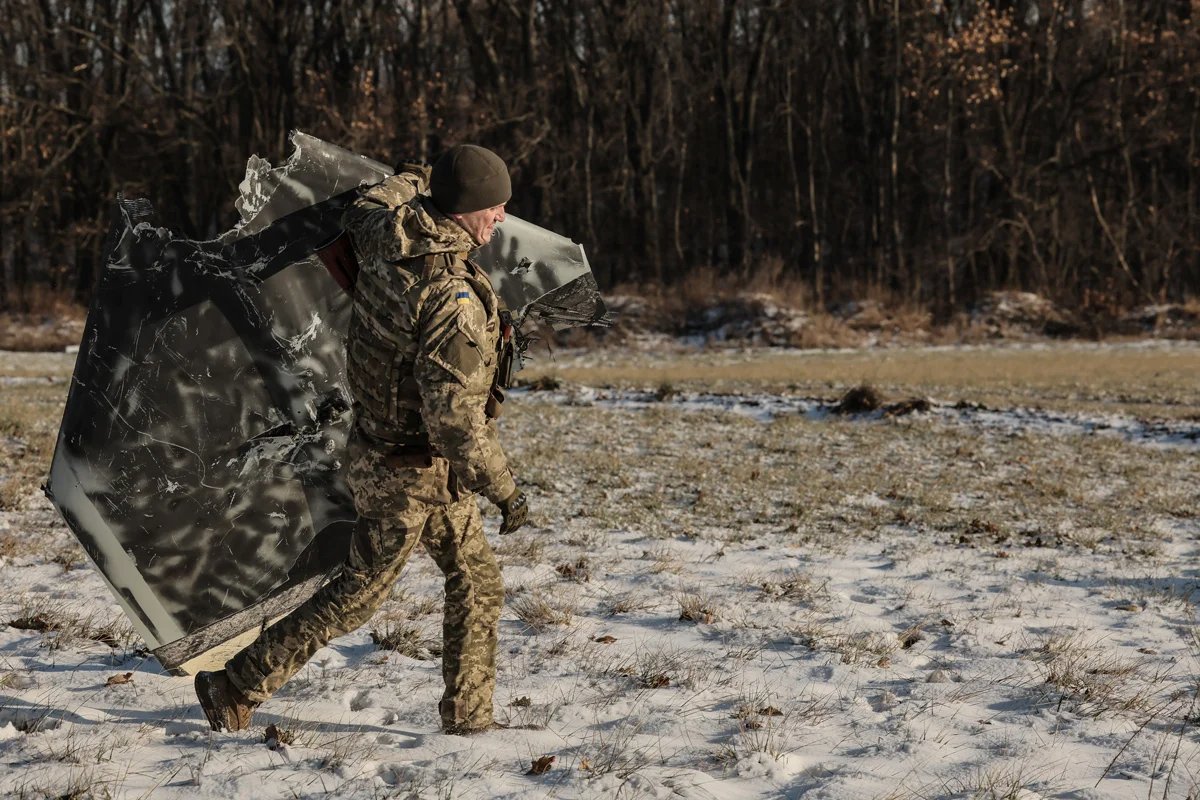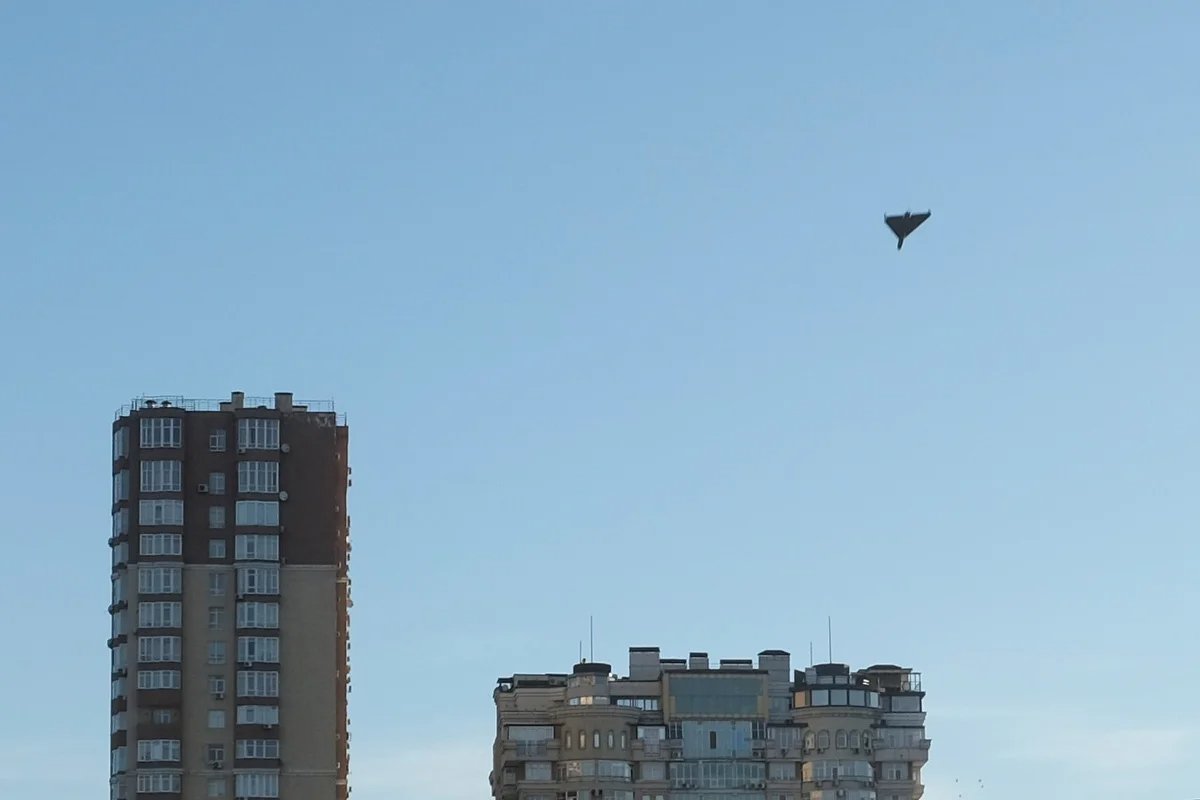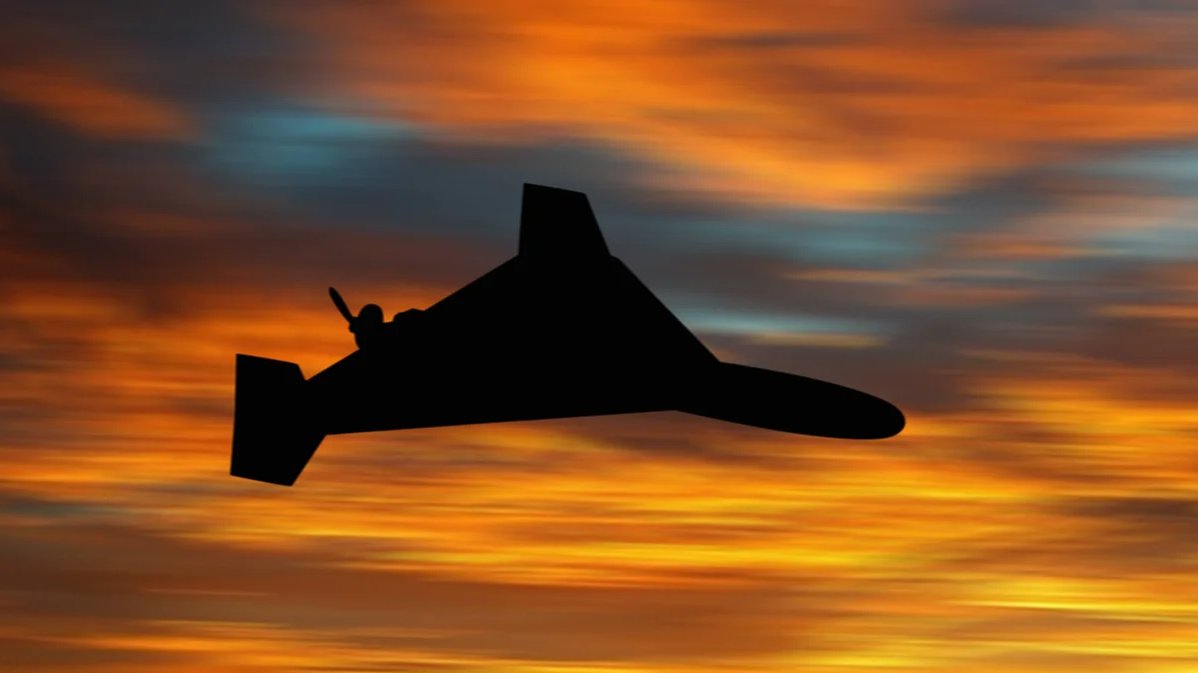Two NATO countries, Romania and Latvia, reported incursions into their airspace by Russian drones in early September, prompting questions about NATO’s lack of response to similar incidents.

Serhiy Pakhomenko
Associate history professor at the University of Latvia
Several drones were detected in Romania’s airspace in the early hours of 8 September, and debris from one was later found outside the town of Periprava, on the Ukrainian border. The day before that, a Russian-made Shahed drone crossed into Latvian airspace from Belarus, and, after flying for some 100 km, crashed — or landed, this has yet to be clarified — in a forest 30 km from the town of Rēzekne, in the east of the country.
Such incidents have become somewhat routine for Ukraine’s neighbours, with Russian drones regularly straying into third countries, which are then forced to put their anti-air defence forces on high alert, scramble fighter jets in some cases, and monitor drone movements.
Each NATO country is legally entitled to take its own decision on how to act in such situations, but no country wants to take on such a heavy burden, and has, thus far, followed an unwritten NATO rule of refraining from drastic action.
However, no NATO country has yet dared to shoot down a stray drone, and each incident has been followed by a stock public statement. The drone did not pose a threat to the life and safety of citizens. There was no evidence that the drone was targeting a NATO country. Shooting down a drone posed a hazard to civilian infrastructure. Or, perhaps most importantly, a harsh reaction to such an airspace incursion could have unpredictable consequences and further escalate an already tense situation.
Romania has an iron-clad excuse for inaction in that destroying aircraft flying over the country is prohibited by law. But since the recent drone incident, parliamentarians have passed a motion to consider repealing the legislation.
Each NATO country is legally entitled to take its own decision on how to act in such situations, but no country wants to take on such a heavy burden, and has, thus far, followed an unwritten NATO rule of refraining from drastic action.
Meanwhile, NATO has taken a restrained and rather predictable position, with spokesperson Farah Dakhlallah commenting on the Latvian drone incident in familiar style: “While we have no information indicating an intentional attack by Russia against [our] allies, these acts are irresponsible and potentially dangerous.”

A Ukrainian soldier carrying the debris of a Shahed drone near Kyiv. Photo: Oleg Petrasiuk / EPA-EFE
The Latvian case
The Latvian incident was different from other drone sightings, however, in that it involved a combat drone carrying dozens of kilogrammes of explosives. A truly deadly weapon had travelled a considerable distance into Latvia and crashed — or landed — in the forest, thankfully without detonating.
The timing is also interesting. The event occurred while the Latvian Armed Forces, the National Guard and NATO allies were conducting their annual Namejs military exercises, giving grounds to believe that the drone incursion was a deliberate provocation.
It was not initially reported in Latvia that a combat drone had entered the country, and both military and government officials chose not to mention the military exercises, to avoid creating the impression that the two events were connected. Nor did Latvian leaders classify the incident as an act of provocation.
The chief of Latvia’s National Armed Forces, Lieutenant General Leonīds Kalniņš, commented that the drone had been detected immediately. “We assessed and monitored the situation … and whether there was a threat to infrastructure and the civilian population,” said Kalniņš, adding that the decision not to shoot down the drone was taken in accordance with the established procedure for the Latvian Armed Forces and NATO member countries. According to official preliminary reports, the drone did not have “enemy targets in Latvia” and “did not have the specific purpose of entering Latvia”.
When asked why the drone was not shot down, the Latvian military gave the usual argument that the drone’s target was not Latvia, that its movement had been closely monitored while still in Belarusian airspace, and that this was the safest way to respond.
The Latvian Interior Ministry did summon the Russian ambassador Dmitry Kasatkin to explain the drone incident over Rēzekne, though the event itself initially garnered little coverage in the Latvian press. Kasatkin predictably denied Russia’s involvement.
However, on 9 September, the leadership of the Latvian Armed Forces held a press conference where they first disclosed that this was a combat drone with undetonated explosives which was subsequently disarmed on the ground. When asked why the drone was not shot down, the Latvian military gave the usual argument that the drone’s target was not Latvia, that its movement had been closely monitored while still in Belarusian airspace, and that this was the safest way to respond.
Not everyone in Latvia was satisfied with these explanations, with the inaction of the military, allowing the drone to fly so far into the country, being the main target of criticism from experts, politicians and on social media.
Artis Pabriks, the country’s former defence minister, said that the drone should have been shot down, and that the responsible officials had been too slow to act. Pabriks admitted that there would have been risks in neutralising the drone because of potential damage at the crash site, but wondered what would have happened if the drone had crashed in Rēzekne or in a military camp and exploded.
The communication failures were also criticised by former Defence Ministry secretary Jānis Garisons, who argued that the public should have known the truth from the beginning and demanded clearer answers as to why the military command decided not to shoot down what it knew to be a combat drone that could have fallen on a populated area.

A kamikaze drone flying over a residential area in Kyiv. Photo: Sergey Shestak / EPA-EFE
Another red line
NATO’s hesitation in granting permission to its member states bordering Ukraine to shoot down drones is chiefly political. Shooting down identifiably Russian drones could become a roundabout way of admitting an act of aggression, which could, in turn, lead to invoking Article 5 of the treaty, which regards an attack on any NATO country as an attack on all of its members, necessitating an armed response.
The devil is in the detail, however. First, the treaty does not define what exactly constitutes an act of aggression. Second, the country that is attacked must itself seek assistance from its allies. Third, each country has the right to decide for itself what the nature of that assistance should be, which may not be military at all.
Still, the prospect of NATO taking on Russia and its mighty nuclear arsenal remains virtually unthinkable to its leadership. It is much more expedient to keep supplying Ukraine with weapons and for the Ukrainians to defend themselves.
Which makes it somewhat curious that Ukraine should still desperately try to persuade NATO to enforce a no-fly zone over the western part of the country, at least, and shoot down incoming Russian drones and missiles. But if NATO members will not shoot down Russian drones in their own countries for fear of “escalation”, why would they take the radical step of agreeing to destroy enemy aircraft in Ukraine?
Still, the prospect of NATO taking on Russia and its mighty nuclear arsenal remains virtually unthinkable to its leadership.
However, Russian drones could still be destroyed in NATO countries without those incursions being identified as acts of deliberate aggression. The drones could be designated as a threat to the life and safety of people or infrastructure and be destroyed on those grounds. But other factors — economic, technological and security-related — would then come into play.
Ukrainian military expert Ivan Stupak says the weapons required to destroy drones are much more expensive than the drones themselves. As drones enter NATO airspace so frequently, destroying them could easily deplete stockpiles of valuable missiles, undermining the bloc’s military and economic capabilities.
Officials in both Latvia or Poland have said they do not have the necessary systems for detecting aircraft. It is hard to say whether this is an excuse to cover up political indecision within NATO itself, or the actual state of affairs. If the latter, this is no less alarming.
The armed forces within the country facing an incursion by a Russian drone must make a quick decision as to whether it is safer to shoot it down or just to track its movement. To date, they have preferred the second option.
Whatever the reason for NATO countries’ reaction to Russian drones, whether the incursions are accidental or a provocation, Russia benefits from the situation. This is not because it provides a way for Russia to identify vulnerable points in enemy defences or weaknesses in their technical capabilities. Rather, with every such incident, NATO finds itself in an awkward political position, where convenient inaction tarnishes the reputation of the alliance and its members, and generates distrust, fear and frustration in the countries concerned.
Join us in rebuilding Novaya Gazeta Europe
The Russian government has banned independent media. We were forced to leave our country in order to keep doing our job, telling our readers about what is going on Russia, Ukraine and Europe.
We will continue fighting against warfare and dictatorship. We believe that freedom of speech is the most efficient antidote against tyranny. Support us financially to help us fight for peace and freedom.
By clicking the Support button, you agree to the processing of your personal data.
To cancel a regular donation, please write to [email protected]

